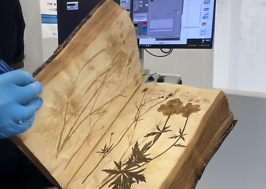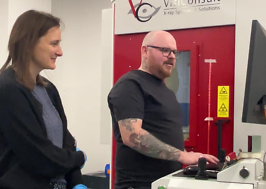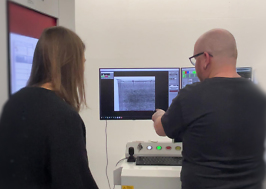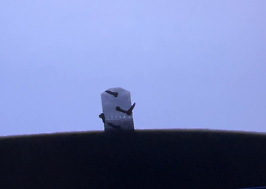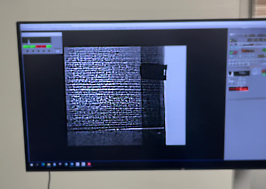Making centuries-old knowledge visible with radiographic testing
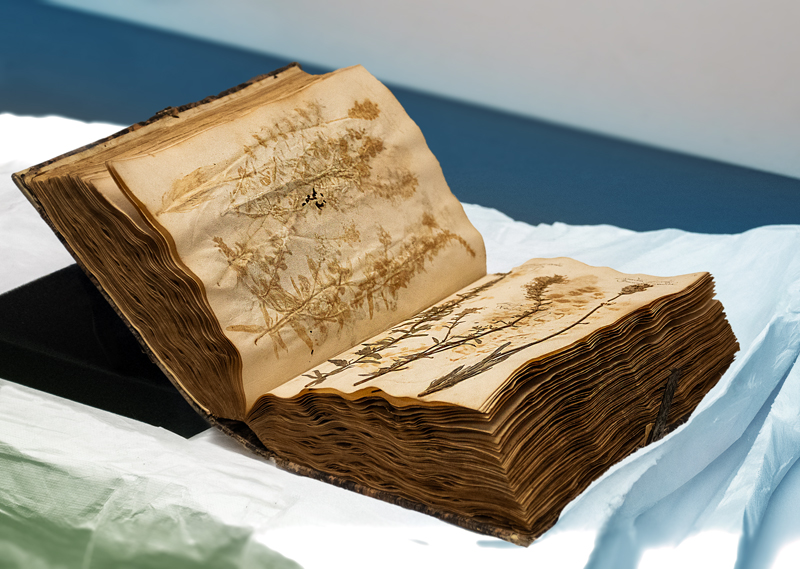
For a special assignment with a materials testing laboratory, the focus this time was not on weld seams and metallic components. The focus of the investigations was an herb book from the Thuringian State Museum Heidecksburg from 1661, which belonged to the collection of the Princes of Schwarzburg-Rudolstadt.
The book contains dried plants and handwritten notes and descriptions on every page. “The flowers and herbs come from the Rudolstadt region and are almost four hundred years old,” says Sabrina Lüderitz, Director of the State Museum, describing the find, ”some species may no longer be found in our region or have different names today.” The herb book can therefore contribute to a better understanding of the fauna in the Saale valley in the 17th century as well as the use of the individual plants. “We have here a testimony to the scientific working methods of this era,” says Sabrina Lüderitz.
The binding of the herb book is of particular interest: it is unusual for books from this period to have a dust jacket in addition to the binding. Did the binding perhaps belong to an older book? The only way to find out about the origin of the binding is to look under the dust jacket. The Thuringian State Museum asked the materials testing laboratory at ifw Jena for assistance so that the historical parchment dust jacket would not have to be destroyed for research purposes. In the laboratories of the research institute, weld seams and steel components are normally examined for defects. Modern digital radiographic testing with X-rays makes it possible to look inside components without having to cut them open or damage them. An ideal procedure for the Heidecksburg herb book. The X-rays do not damage the pages of the book, the plants or the binding. The X-ray images can be viewed directly on the digital equipment at ifw Jena, viewing angles can be corrected and results can be evaluated.
Maik Anders is responsible for the materials testing laboratory at the institute. This job is also special for him. “In materials testing, there are different test methods for different requirements. Radiographic testing is always used when the test pieces must not be damaged under any circumstances,” he says, describing his work. “Similar to a doctor's surgery, we use X-rays to make internal parts visible without causing any damage.”
The secrets of the herbal book could thus be revealed a little further. The nails used for the book's clasp became visible in the X-ray equipment. Damage to the paper and the wood and paper structure of the cover and book pages are also clearly visible in the X-rays. “The structure of the paper and its fibers is like a fingerprint,” explains Sabrina Lüderitz, ”it allows us to identify the manufactory where the paper was made and which special mold was used.”
Thanks to the collaboration between the castle museum and the research institute, a small piece of Thuringian history has been deciphered. But not all the clues in the herb book have been deciphered yet. For example, there are almost invisible decorations in the binding whose origin remains unclear. “We will continue to work together to clarify the origin of the binding and how the book was created,” concludes Sabrina Lüderitz.



